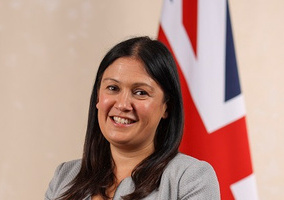The 10 least generous areas in the UK are all districts in London, according to new research, while residents in affluent suburbs outside the capital give more of their money to charities.
A report published today by the Charities Aid Foundation (CAF) says that British people give 1.1% of their disposable income to charities on average but those in the least generous area, Kensington and Bayswater, donate less than half this proportion (0.5%).
The UK Local Giving Report, which uses YouGov data across parliamentary constituencies, also says that people in Kensington and Bayswater donated £49m in 2024, more than any other local area, but it is the least generous due to residents’ high incomes.
Chelsea and Fulham is ranked as the second least generous area in the country, with residents in the west London constituency and Holborn and St Pancras both giving 0.6% of their income to charities.
All of the least generous constituencies have high or very high local incomes, the report says, but some also have high levels of deprivation, suggesting they are areas of significant inequality.
Fewer charities in areas with greatest need
Overall, researchers found that places with the highest levels of need had the fewest charities registered in the area and the lowest donation levels.
This echoes findings in a report last year by think tank Centre for Cities, which found that there is a higher density of charities in the more affluent south of England compared to regions with greater need.
CAF’s report also found that areas of east London recorded the highest levels of people using charities for day-to-day needs – with over 40% of Tower Hamlets, Peckham, and Hackney residents saying someone in their household relied on charities.
Unlike the least generous areas identified by CAF, many of the constituencies where people give the highest proportion of the disposable incomes also have low levels of deprivation.
Sheffield Hallam in south Yorkshire is ranked as the most generous constituency, with residents donating an estimated £28.4m last year, 1.9% of their disposable income.
Sutton Coldfield is named as the second most generous, with people in the Birmingham suburb also giving 1.9% of their disposable income to charities.
‘Geographic imbalances need addressing’
CAF chief executive Neil Heslop said: “With uneven levels of generosity, we need to consider how we encourage those who can afford it, to give more and how we can empower places to attract more philanthropic investment to translate into a more resilient social fabric.
“This is not just a challenge for local places. The answer also starts at a national level, through a new strategic framework for giving that has place – and local communities – firmly at its heart.”
Rhodri Davies, founder of Why Philanthropy Matters, said: “The fact that people in less affluent areas give a larger percentage of their income to charity is a reminder that generosity is not always about having more to give, but often about giving more of what you have.
“The challenge, however, is that when there are such stark disparities in wealth around the country, even if people in less affluent areas are giving more generously, the charities in those areas are still getting far less in donations overall.
“As the report highlights, this means that at a national level there is a real mismatch in terms of where needs are most acute and where there are properly-funded charities on hand to address them, and that is a real cause for concern.
“As the government looks to encourage more local and place-based giving in the UK, it needs to think through what can be done to address some of these geographic imbalances; whilst at the same time making sure that policy approaches don't become too directive and end up stifling what it is that drives people to give in the first place.”
Last year, culture secretary Lisa Nandy announced plans for a place-based philanthropy strategy, which Civil Society understands is in development.
A spokesperson for Nandy’s department DCMS said: “We recognise that philanthropy is a vital part of the impact economy that is why through our Plan for Change we have committed to developing a place-based philanthropy strategy, exploring how the government can create an environment to encourage philanthropists to support local communities across the country, reaching areas that need it most.”
Also commenting on CAF’s research, Prism the Gift Fund CEO Anna Josse said charities need to get better at asking wealthy donors for money.
“Raising money from individuals requires cultivating deep and long-lasting relationships with donors, taking the time to explain how gift aid and the gifting of shares works, and understanding their motivations for giving,” she said.
“It also means shaking off negative preconceptions about why they give. Giving should be celebrated in every way, regardless of your income or the amount you give.
“If we really want to create a step change in fuelling philanthropy, we need to be bolder and braver in asking the wealthiest in society for money.”
Related articles












